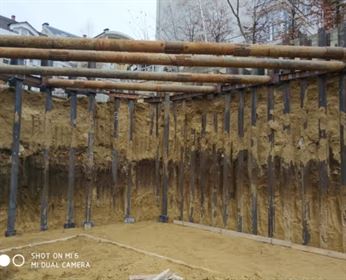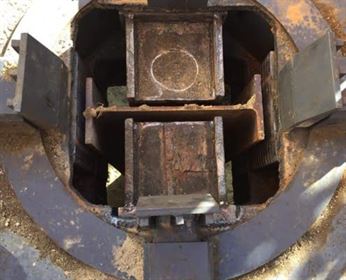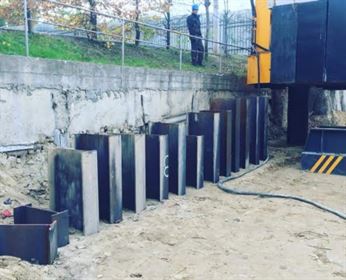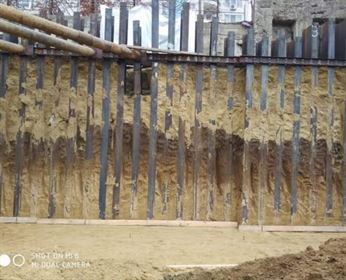Sheet piling and retaining walls
Sheet piling of pits
At the initial stage of construction, the soil is in its natural state – not compacted. After an increase in the load on the soil, which is provided by the new structure, the soil is compacted, not only under the facility being built, but also in its immediate surroundings. Such physical processes threaten closely spaced buildings with deformation and violation of integrity. In order to prevent undesirable consequences, sheet piling of foundation pits or “sheet pile wall” is used.
Such a fence is formed by immersing special sheet piles into the ground. The sheet piling, keeping the soil compaction, localizes it within its borders and completely eliminates the effect on the soil of the foundations of nearby buildings.
Such a fence is sometimes made temporary, but it is often used permanently. For example, in the case when sheet piling is used as a permanent formwork when erecting basement walls and strip foundations, as well as a waterproof barrier after lowering the water table.
Types of sheet piling structures
Depending on the working conditions, their purpose, the size of the pit and the properties of the soil, various schemes of sheet piling are used. They are built from wooden, metal and reinforced concrete piles. Each type of sheet piling has its own pros and cons.
Wood grooves are made either composite, knocked down with nails from boards, or made from bars using a groove-comb connection. Wooden sheet piling can be operated only once, since it is impossible to remove them from the ground without damage. This one-time use makes construction more expensive. Therefore, the most effective use of metal sheet piles.
Metal sheet piles are produced of various profiles from carbon steel – I-beams, pipes. Usually, sheet piling is made of pipes with a diameter of 219 to 530 mm. The type of sheet pile depends on the depth of the excavation, the deeper it is, the more the moment of inertia of the section is selected. Metal sheet piles can be used multiple times, checking after being removed from the ground for compliance with the operating standards. After elimination of defects, the piles are ready for further operation.
Installation of tongue and groove
For the installation of sheet piles, several methods of immersing sheet piles into the ground are used. Before diving, it is necessary to drill a sheet pile – letter wells. Then, depending on the different requirements and the density of planting the piles in the wells, the method of immersion is selected. We use pile immersion by indentation.
Immersion of the tongue by screwing or pressing.
For this method, sheet piles are used from steel pipe with spiral wound reinforcement steel. Immersion is carried out by rotation and simultaneous pressing. A big plus of this method is ensuring the safety of nearby buildings and the absence of the need for constant monitoring of them. Therefore, the screw-on method is recommended for areas with dense urban development.




